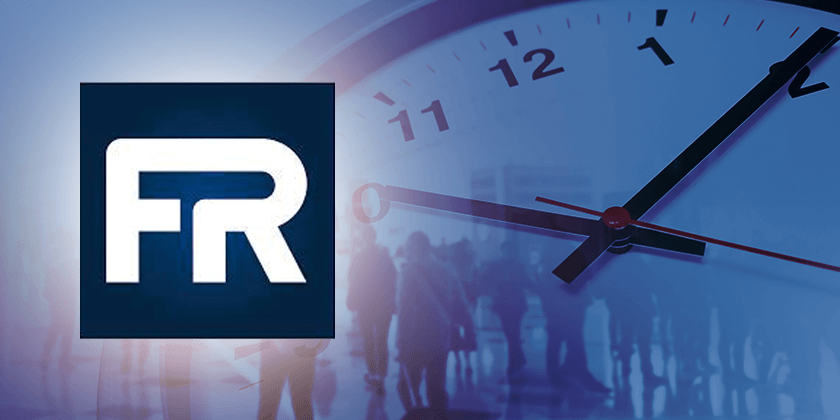Achieving FedRAMP certification typically takes 12 to 18 months, although this can vary based on specific scenarios. For a streamlined process, a provider may encounter several stages, which could culminate in approximately 15 months to certification.
This is the short answer to how long it takes to get Fedramp certified. However, it is more complicated than this, and we will explain it further.
Obtaining FedRAMP certification is critical for service providers seeking federal contracts involving cloud products or services. The Federal Risk and Authorization Management Program (FedRAMP) sets the standard for US federal agencies’ assessment, authorization, and monitoring of cloud products and services.
As cybersecurity threats evolve, achieving FedRAMP certification illustrates a company’s commitment to maintaining robust security protocols. Thus, it instills confidence in government partners and paves the way for business growth within the public sector.
This blog will explore the general time required to get FedRAMP certified and the factors influencing the overall costs.
Whether you’re a cloud service provider (CSP) or a government agency interested in adopting cloud technologies, understanding the timeline and financial investment required for certification can help in strategic planning and budget allocation.
Let’s delve into the journey towards meeting one of the cloud industry’s most stringent security compliance standards.
Understanding FedRAMP Certification
FedRAMP is a government-wide program with a standardized approach to security assessment, authorization, and continuous monitoring for cloud products and services. Introduced in 2011, it was created to support the U.S. government’s move towards cloud computing by ensuring that data stored in the cloud is highly secure and protected.
Managed by the General Services Administration (GSA), FedRAMP facilitates adopting secure cloud services across federal agencies, reducing duplicate efforts and saving time and money.
To obtain FedRAMP certification, cloud service providers must comply with security controls based on the National Institute of Standards and Technology (NIST) Special Publication 800-53, which covers the principles and guidelines for securing federal information systems.
The FedRAMP process is rigorous, involving meticulous documentation, assessments by third-party organizations, and continuous monitoring once authorization is granted.
FedRAMP certification is important for those aiming to serve U.S. federal agencies. Given the high stakes associated with government data, FedRAMP ensures service providers meet the stringent security demands required to protect sensitive federal information against many cyber threats.
Thus, understanding the depth of the certification process is essential for any CSP striving for compliance and looking to engage in government contracts.
7 Key Factors Affecting the Certification Timeline
Several critical factors influence how long it takes to achieve FedRAMP certification, impacting the journey’s duration from start to finish.
As we delve into the variables that can extend or shorten the certification process, it’s important to note that the complexity and readiness of a cloud service provider’s security posture often dictate the timeline.
-
Preparation and Readiness
The more mature and documented a provider’s security practices are, the more streamlined the FedRAMP certification process can be. Providers new to the stringent security requirements can expect a longer preparation phase.
-
Third-Party Assessment Organizations (3PAOs)
The efficiency and thoroughness of the 3PAO conducting the security assessment can greatly affect the timeline. Therefore, it is crucial to select an experienced and reputable 3PAO.
-
Documentation Quality
FedRAMP is documentation-intensive. Precise, clear, and comprehensive security documentation can reduce back-and-forth clarifications and revisions, expediting the certification process.
-
Cloud Service Offering Complexity
Simpler cloud service offerings with fewer variables may navigate the certification process quicker than complex, multi-faceted environments with many potential security implications.
-
Agency Sponsorship
A federal agency willing to sponsor the certification process can determine the timeline. A sponsor may accelerate the path through the necessary authorization steps.
-
Risk Management and Mitigation Strategies
Proactively addressing potential risks and demonstrating effective strategies can lessen the time required for the risk assessment phase.
-
Continuous Monitoring Capabilities
Demonstrating the ability to monitor and respond to security issues continuously can simplify parts of the authorization process that are aligned with ongoing compliance requirements.
It is a common pitfall to underestimate the time and resources required to meet the FedRAMP criteria. Organizations considering FedRAMP certification must evaluate these factors diligently to establish a realistic timeline that aligns with their operational capacities and strategic objectives. Proper planning and prioritization are vital to navigating this process effectively.
The Typical Timeline for Achieving FedRAMP Certification
The journey to FedRAMP certification generally spans 12 to 18 months; however, many factors can shift this timeline. In a distilled example, a cloud service provider might experience the following sequence of phases, totaling approximately 15 months:
- Pre-Assessment and Planning (3-6 months): The initial steps include a comprehensive analysis of FedRAMP standards, a gap analysis, preparation of necessary documentation, and the selection of a 3PAO.
- Security Assessment (6-9 months): The chosen 3PAO reviews and tests the cloud service’s security controls in depth. This period is dedicated to verifying documentation and validating security practices.
- Remediation (1-3 months): After the assessment, providers must address any security gaps or shortcomings detected previously, which may involve refining security controls and policies.
- Authorization Package Submission and Review (2-3 months): The compiled security package and assessment results are submitted to the FedRAMP PMO and potentially to a sponsoring agency for a thorough examination.
- Authority to Operate (ATO) Issuance (1-2 months): To conclude the process, the package is either approved by the sponsoring agency or the Joint Authorization Board (JAB), which grants an ATO signifying compliance with all FedRAMP mandates.
Collaborating with an experienced 3PAO, streamlining documentation processes, and possessing strong pre-existing cybersecurity frameworks can accelerate this timeline.
Conversely, complex cloud offerings or incomplete pre-assessment preparations may result in extensions beyond the 15-month example.
Providers are encouraged to proactively coordinate with FedRAMP authorities and seek specialized advisement to navigate this certification’s timeline most effectively.
8 Stages of the FedRAMP Certification Process
The FedRAMP certification process includes several stages, from initial preparation to receiving an Authority to Operate (ATO). Here are the main steps:
- Initiation: The cloud service provider begins by determining the need for FedRAMP certification and aligning their security measures with FedRAMP’s extensive requirements.
- Preparation: Providers prepare the necessary documentation, which includes system security plans, policies, and procedures. They also select an accredited 3PAO for their security assessment needs.
- Security Assessment: This involves the 3PAO’s comprehensive evaluation of the cloud service offering’s security controls, ensuring they comply with NIST standards as required by FedRAMP.
- Remediation: Providers make necessary adjustments based on the security assessment findings, demonstrating their commitment to resolving any issues with their security posture.
- Authorization Package Submission: With a complete documentation package, the provider submits it to either a sponsoring agency or the Joint Authorization Board (JAB) for review.
- Security Package Review: The security package undergoes a critical analysis by the FedRAMP PMO, JAB, or sponsoring agency, potentially culminating in a recommendation for provisional authorization.
- ATO Issuance: A final review determines whether the cloud service provider meets all FedRAMP requirements, resulting in the granting of an ATO if compliant.
- Continuous Monitoring: Upon receiving the ATO, providers must monitor and report to maintain their FedRAMP authorization, adhering to continuous security assessment and improvement practices.
Each step of this process is crucial and must be approached with due diligence to ensure compliance and the successful acquisition of FedRAMP certification. Providers are advised to establish a clear strategy, preferably with guidance from FedRAMP experts, to navigate through these stages efficiently.
10 Acceleration Tips: Speeding Up the FedRAMP Certification Process
To speed up the FedRAMP certification process, cloud service providers can adopt several strategic approaches. Timing is essential, and while maintaining thoroughness and compliance, there are ways to expedite the process:
- Engage with FedRAMP Early:
Initiate early communication with the FedRAMP Program Management Office (PMO) to get guidance and clarify expectations. - Choose an Experienced 3PAO:
Partner with a 3PAO that has a proven track record of efficient and successful FedRAMP assessments, which can lead to fewer issues and revisions. - Leverage Automation Tools:
Utilize automation tools for continuous monitoring and compliance, which can streamline parts of the certification and ongoing authorization processes. - Invest in Pre-Assessment Readiness:
Internal assessments should be conducted to identify and address gaps before the formal 3PAO assessment begins, reducing the likelihood of significant remedial action later. - Detailed Documentation From the Start:
Prioritize comprehensive documentation early to prevent delays during the assessment phase, ensuring all security controls are accurately represented. - Standardize and Simplify Offerings:
Streamline and standardize cloud service offerings to minimize the variables that assessors must evaluate. - Establish Clear Internal Communication:
Maintaining consistent communication within your team and with external parties like the 3PAO and Federal agencies for smoother coordination throughout the process. - Regular Progress Tracking:
Monitor the certification progress meticulously and adjust strategies to stay on track with projected timelines. - Employ FedRAMP Advisory Services:
Consider expert advisory services for specialized insights into the FedRAMP process, potentially saving time by avoiding common pitfalls. - Prepare for Continuous Monitoring:
Develop a robust plan for continuous monitoring early in the process. This is a requirement after achieving the ATO and can lead to quicker authorization grants.These tips can significantly reduce the time required to get FedRAMP certified, especially when combined with a proactive and dedicated approach. It’s important to balance the desire for speed with the need for compliance, but providers can achieve both objectives with proper planning and execution.
Final Considerations and Resources
Before embarking on the FedRAMP certification pathway, there are crucial considerations and valuable resources to ensure a streamlined and successful process.
Cloud service providers should take into account the following aspects:
- Tailoring the Approach: Understand that the FedRAMP certification process is not one-size-fits-all and should be tailored to the unique attributes of each cloud service offering.
- Investment in Expertise: Realize the importance of investing in knowledgeable personnel or external consultants specializing in FedRAMP to navigate the complex landscape effectively.
- Understanding Mutual Responsibility: Recognize the shared responsibility model, where cloud service providers and government agencies are responsible for security compliance.
- Considering Business Impact: Consider the long-term business implications of FedRAMP certification, including market opportunities, reputational benefits, and relationship building with government clients.
In addition to these considerations, several resources are available to aid providers through the certification process:
- FedRAMP.gov: The official website offers a wealth of information, including templates, guidelines, and FAQs that providers can use to understand and meet the program’s requirements (https://www.fedramp.gov/).
- FedRAMP Marketplace: Providers can use the marketplace to identify agencies looking for their service type and showcase their compliance status (https://marketplace.fedramp.gov/).
- NIST Publications: Refer to NIST’s publications for foundational guidelines and control frameworks that underpin FedRAMP’s requirements (https://www.nist.gov/publications).
By considering these aspects and fully leveraging available resources, cloud service providers can better position themselves to achieve FedRAMP certification efficiently and effectively.
While the investment in time and resources might be substantial, the benefits of FedRAMP compliance can offer long-lasting returns, enabling providers to secure a foothold in the lucrative federal market.

